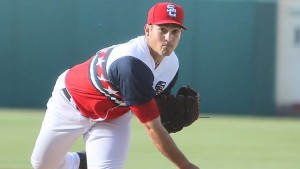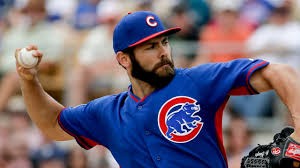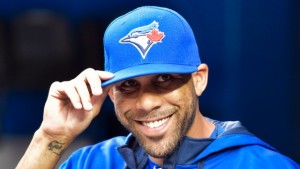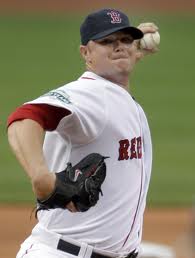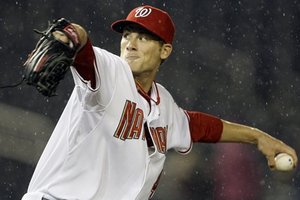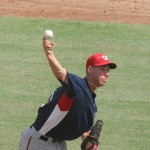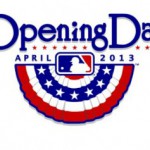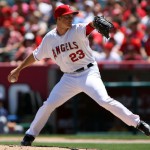After skipping the minor league pitching staff reviews in 2014 (that silly thing called work interfered), I’m back for 2015. I’ll be reviewing the six minor league levels and the major league levels going from high to low. In this series, we have already published the MLB version for 2015.
For some historical perspective, here’s 2013’s version (featuring Tanner Roark), here’s 2012’s version (featuring John Lannan) and 2011’s version (featuring Tommy Milone) of this post for AAA Syracuse. In the missing 2014 post I likely would have “featured” either Taylor Hill or Rafael Martin.
All stats are courtesy of either milb.com’s Syracuse Stats page or via Fangraph’s Syracuse Stats page. Also useful here are the Big Board and the Nats Draft Tracker. And here’s the Baseball America Minor League Free Agent (MLFA) tracker. And here’s a list of the official MLB MLFA declarations for 2015.
Syracuse Pitching Staff movement throughout the year (* == lefty)
- Opening Day Rotation: Cole, Jordan, THill, McGregor, Billings
- Closing Day Rotation: Espino, Bleier*, McGregor , THill, Jordan (Cole 9/1 callup)
- End of Season Swingmen: Walters, Billings
- End of Season bullpen: Runion, Gutierrez, Harper*
- 9/1 promotions: Solis*, Martin, Grace*, Cole
- Mid-Season Promotions: Rivero*, Ross, Treinen
- Up-and-back: Martin, Grace*, Cole, Jordan, THill, Solis* (not counting 9/1 call-ups)
- Down-and-back: Bleier*, Runion
- Demotions: Spann* (was up for spot start), AWilliams (up for spot start), EDavis, Demny,
- DL/restricted: Swynenberg
- Cut/released: Delcarmen, Lively (Japan), RHill*, Simmons, Meek (Korea), Valverde (opt-out), Fornataro
Syracuse starters. The rotation started the season with Cole, Jordan, Hill, McGregor, and Billings. It finished the year with Espino, Bleier, McGregor , THill, Jordan and Cole. Here’s an overview of the starters Syracuse used, starting with the original five starters.
- A.J. Cole was Syracuse’s opening day starter in 2015. On the year, he was 5-6, 3.15 ERA, 1.18 whip, 3.90 FIP and 76/34 K/BB in 105.2 innings. Cole got yanked up and down a couple times on the year, with one ill-fated spot-start for the major league team where he looked completely out of his depth against Atlanta (not exactly the ’27 Yankees). His K/9 is down, BB/9 is up from his stint in AAA in 2014, though his BAA improved significantly. I’m struggling not to write him off; after all he’s only 23, he’s still listed in or near the top 100 prospects in all of the minors, and he still could have value. I just don’t think its going to happen with the Nats. He’s been pushed down on the starter depth chart and (save an injury) has no chance of making the 25-man roster in 2016. So is there value in having him pitch another year in upstate New York? I could see Cole getting flipped to a team that could use a cheap 5th starter candidate. Outlook for next season: Syracuse’s opening day starter again, unless moved.
- Taylor Jordan was 5-6, 2.95 ERA, 1.15 whip, 3.41 FIP and 61/27 K/BB in 103 IP. He’s slipping further and further away from a rotation job that seemed rather likely after his 2013 sterling debut. His AAA numbers were pretty good this year but he got lit up in his one 2015 spot start (to be fair, it was against Toronto and the best offense in the majors). His margin for error is just so much lower because he doesn’t get the K/9 that other guys do. Unlike Cole though, Jordan doesn’t necessarily wow the scouts and may be tougher to move. I think he plays out his options string as a AAA starter with occasional big league cover and then gives it a go in another organization. Outlook for next season: Syracuse rotation again.
- Taylor Hill was 3-10 with a 5.23 ERA, 1.62 whip, 3.85 fip and 70/29 K/BB in 118 IP. Not a good year for Hill, who got a handful of mop-up bullpen gigs in late May/early June and wasn’t entirely impressive while doing it. See all that we’ve said for Cole and Jordan, but lower expectations a bit more. I have Hill near the top of my “guys to get DFA’d to make room on the 40-man roster” at this point and he needs to figure out what changed between 2014 (2.81 ERA) and this year (5.23 ERA, both at Syracuse). We won’t really know if he’s getting pushed out of the rotation until deeper dives into the AA rotation. Outlook for next season: Syracuse rotation/release candidate. 1/6/16 update: Hill was DFA’d on the 40-man to make room for Stephen Drew: we’ll update in this space when his roster status is finalized.
- Scott McGregor (boy I have a hard time typing that w/o remembering the old Baltimore Orioles hurler from the mid 1970s) was 6-6 with a 4.04 ERA, 1.43 whip, 4.67 fip and 63/35 K/BB in 107 IP split between starting and relieving. He started in the rotation, having signed as a MLFA in June of 2014 originally then re-upped with the Nats over last off-season to continue his role as AAA 5th starter/long-man. But his performance slipped considerably this year. I don’t see him listed on the MLFA tracker so its possible he’s signed through 2016 with the team, so we’ll assume he’s reprising his role again in 2016. Outlook for next season: Syracuse long-man/spot starter
- Bruce Billings was 8-5 with a 3.63 ERA, 1.26 whip, 3.23 fip and 90/28 K/BB in 121 IP. The MLFA produced well in a season spent in a similar role to McGregor; 4th/5th starter who made way for prospects as they got moved up but who eventually spent most of the year in the rotation. His numbers are about what you’d expect for a veteran minor leaguer/classic AAA org guy; he’s declared again and will look to build on his decent 2015 with an organization where he has a better shot at getting called up. Outlook for next season: in AAA for another organization.
- Paolo Espino had a nice season, getting promoted up from AA and giving Syracuse 20 starts of 3.21 ERA, 1.15 whip, 3.68 fip pitching (88/19 K/BB in 117 AAA innings). The 2014 MLFA signing (as with McGregor) stuck with the team for 2015 and could be an interesting piece going forward. Question is; is he a MLFA for this upcoming season? My records and research disagree with each other: he’s *not* listed in the BA MLFA tracker nor is he on the official MLB declared MLFA list (links at the top), but the drat tracker says he’s a MLFA. I’ll assume our private files are not better than MLBs and assume he’s still under team control. Outlook for next season: Syracuse Rotation.
- Richard Bleier was 14-5 with a 2.57 ERA between AA and AAA this year. 65/16 K/BB in 171 IP. Bleier had a nice season, working his way out of AA and finishing the year in the AAA rotation. His K/9 is shockingly low given his stat line, perhaps why he’s not likely to draw much attention from the team’s executives on 1/2 street. He’s a declared MLFA already for 2015 and likely plies his trade elsewhere next year. Outlook for next season: in AAA for another organization.
- P.J. Walters was acquired mid-season from the Dodgers for cash: for the Chiefs he threw 60 innings of 5.35 ERA and got 5 spot starts towards the end of the year. 52/23 K/BB in his 60 innings for Syracuse on the year. Walters has significant MLB experience, with 152 IP across several organizations dating to 2008. He’s yet to really have a decent MLB stretch thought, and his AAA numbers are starting to look just as bad. Given the team’s dearth of RH bullpen depth options though, I think its safe to say they’ll keep him around to see if he’s an option to consider. Outlook for next season: Syracuse bullpen.
- Other guys who got spot starts here and there:
- Joe Ross had 5 starts before getting called up to the majors. See MLB write-up for more. Outlook for next season: Nats #4 starter.
- Matt Swynenberg had exactly one AAA start of 3 innings this year before spending the rest of the year on the restricted list, which usually indicates retirement. We’ll see if he gets an official release this coming off-season. Outlook for next season: retired/out of the organization.
- Mitch Lively had 2 spot starts but was mostly a reliever; see the reliever section.
- Sam Runion and Eric Fornataro each had a spot start but were primarily relievers; see the reliever section.
- Matthew Spann, James Simmons and Austen Williams each got called up to AAA from lower levels to provide exactly one spot start. See High-A for for Spann and Williams, AA for Simmons writeups.
- Strasburg and Fister had one-two rehab starts for Syracuse in 2015.
Syracuse Relievers: taking a look at the relief corps. We’ll organize relievers by going by IP from most to least. Anyone with less than 10 IP will get cursory analysis at the end.
- Rafael Martin was Syracuse’s closer for a good portion of the season, getting 12 saves in 50 IP across 46 games. We discussed Martin at length in the MLB writeup but will repeat our prediction here. Outlook for next season: Syracuse bullpen/MLB reliever depth.
- Eric Fornataro was a waiver claim last off-season, then DFA’d off the 40-man roster before the season started. He then failed to impress, posting a 5.54 ERA in 50 innings before getting released in July. Outlook for next season: in another organization/out of baseball.
- Matt Grace had a 2.40 ERA in 48 IP and spent a decent amount of time on the MLB roster (17 ip across 26 appearances). See MLB writeup for more. Outlook for next season: Syracuse bullpen/lefty reliever coverage.
- Evan Meek posted a 2.15 ERA across 37.2 innings in the early part of the year, effective if a bit wild (33/19 K/BB in those 37 ip) and, after not getting consideration for a call-up, asked for his release to sign with a Korean team. Outlook for next season: still in Korea or with another Organization.
- Sam Runion posted a 2.91 ERA in 65 IP across AA and AAA after getting picked up in June of 2014 as a MLFA. 1.43 whip, decent K/9 rates, just not enough to get a sniff at a MLB call-up. Just a classic org guy who is a MLFA this year and likely plies his trade elsewhere next year. Outlook for next season: MLFA, re-signed per BA ML transactions so AAA bullpen again (updated 12/29/15)
- Mitch Lively was in basically the same boat as Meek; put up good numbers (2.31 ERA, 0.97 whip, but wasn’t called up and decided to go overseas. He was released on 6/17/15 so as to sign with a Japanese team. He posted a 6.75 ERA in 16 games in Japan; not sure what the future holds for him. Outlook for next season: still in Japan or with another Organization.
- Juan Gutierrez was signed off the AAA waiver wire in August 2015 and threw 34 mediocre innings (3.47 ERA)for Syracuse down the stretch in a classic “we need someone to pitch innings for us to finish the season” move. He’s a MLFA and likely keeps on moving for 2016. Outlook for next season: in another organization.
- Jose Valverde signed a month into the 2015 season with a typical veteran MLFA contract that guaranteed an opt out after a couple of months if the big club didn’t use him. Valverde closed effectively for Syracuse until July, when he opted out. He did not sign elsewhere for 2015. He’s playing in the DWL but I wonder if he’s done; his last two MLB stints were both ugly. Outlook for next season: in another organization/out of baseball.
- Manny Delcarmen had an 8.14 ERA in 21 IP across 18 appearances before getting released in early June. He played out the rest of the season in Mexico. Outlook for next season: in another organization/out of baseball.
- Rich Hill signed as a MLFA late in the 2015 spring from the Yankees, pitched decently as a middle reliever in Syracuse and likely had an “out clause” forcing the team’s hand, who released him in late June. He picked up with Boston, pitched well for their AAA squad, got promoted back to the majors, pitched lights out in 4 starts in the end of the season … and signed a $6M contract to pitch for Oakland in 2016. Go figure. Did the Nats miss the boat here? This isn’t the first time they’ve had a guy in their AAA rosters who went on to have significant success for another club (Colby Lewis, Marco Estrada, Chris Young). Maybe they should have given Hill a 40-man job while they were trying out everyone else in late May/early June. Maybe you could say the same thing about a whole bunch of the MLFA MLB-experienced veterans who passed through Syracuse’s roster in 2015. Outlook for next season: Pitching for Billy Beane out in Oakland on a $6M deal.
- Other Relievers who appeared in AAA of note (not including Rehabbing MLBers): Outlook for next season for all of these guys seems the same: either continued “org guy” middle reliever or minor league free agent in another organization.
- Solis, Treinen and Rivero each had a nominal amount of AAA innings: see MLB writeup for them.
- Demny and Davis spent more time in AA than AAA: see Harrisburg write-up.
- Everyone else not mentioned had 5 or less IP in AAA and were mostly in other levels.
Summary
34 different hurlers passed through the Syracuse locker room this year. Phew. And it seems like a huge percentage of them have already churned out of the organization, looking for their next stop. I guess this is the way AAA teams go these days. We may see more MLFA veteran arms coming into the system for 2016 given the number of guys they’re losing.
Its hard to say whether we really learned much from the AAA staff this year; the team kind of already knew what it had with its highest-end prospects in AAA (the likes of Cole, Jordan and Hill). Almost the entire bullpen was veteran MLFAs who likely won’t be back, most of whom never got a chance to contribute to the major league team in its time of need in 2015.
